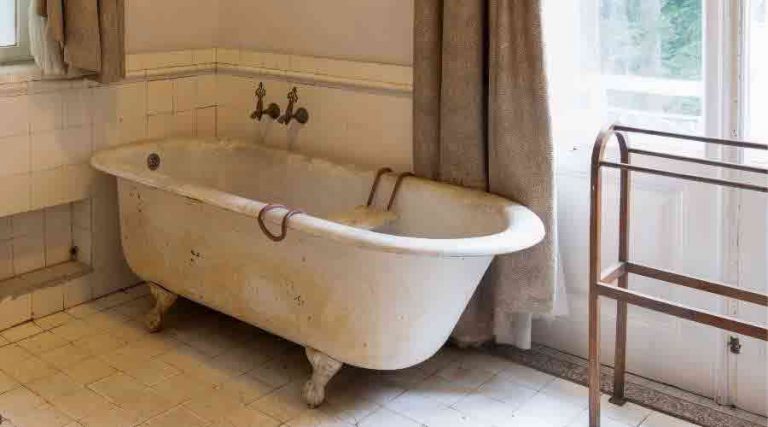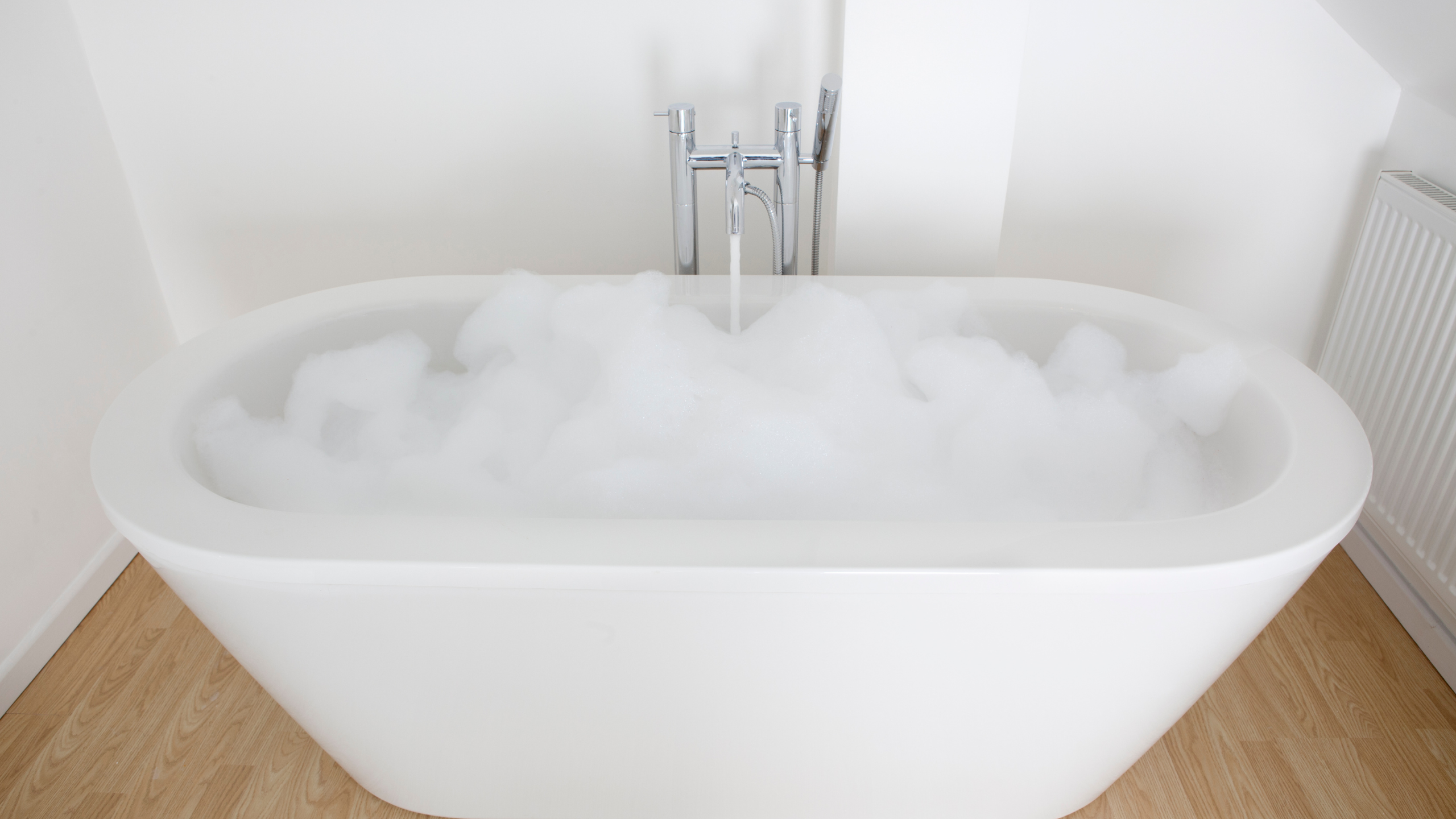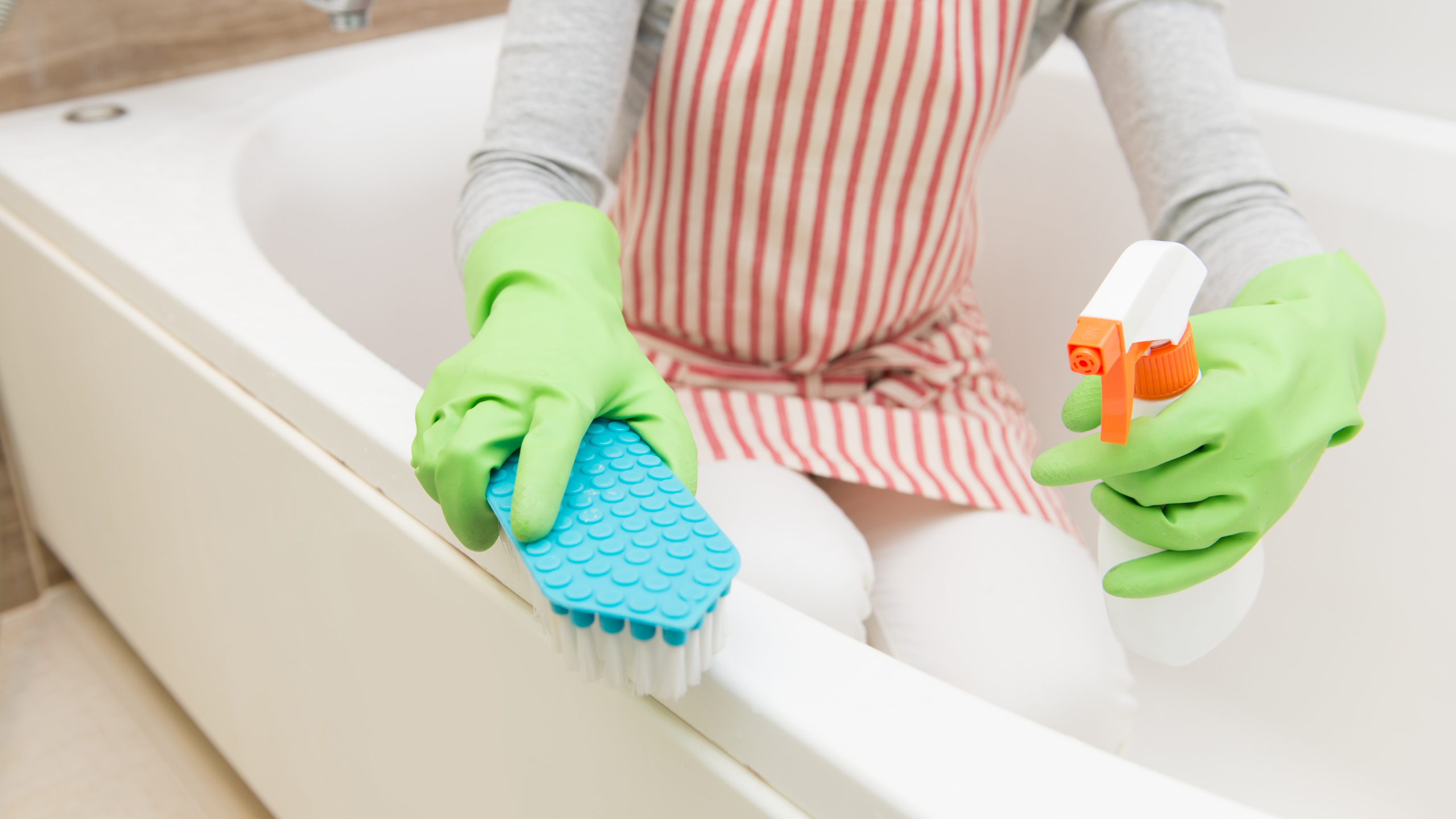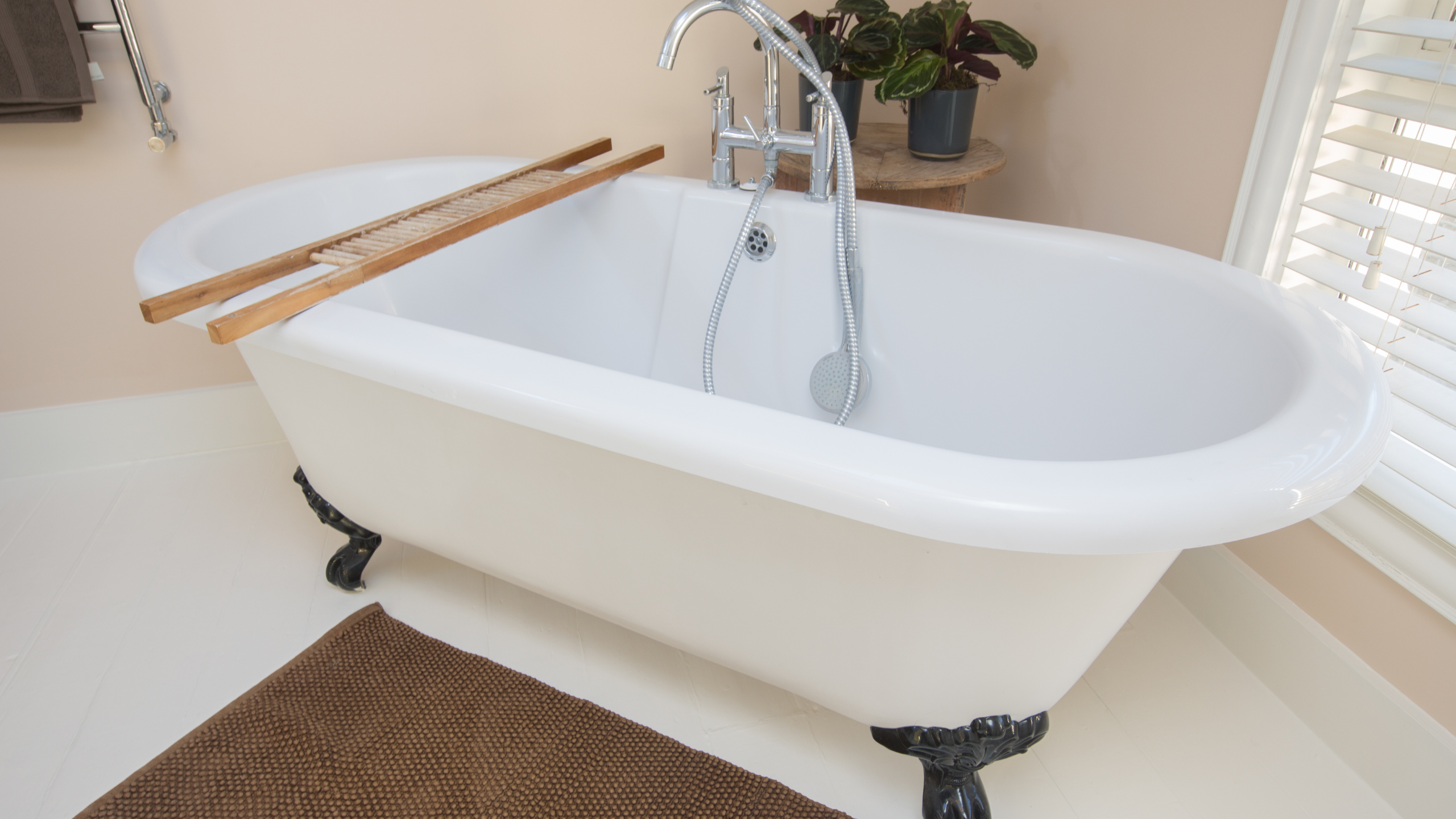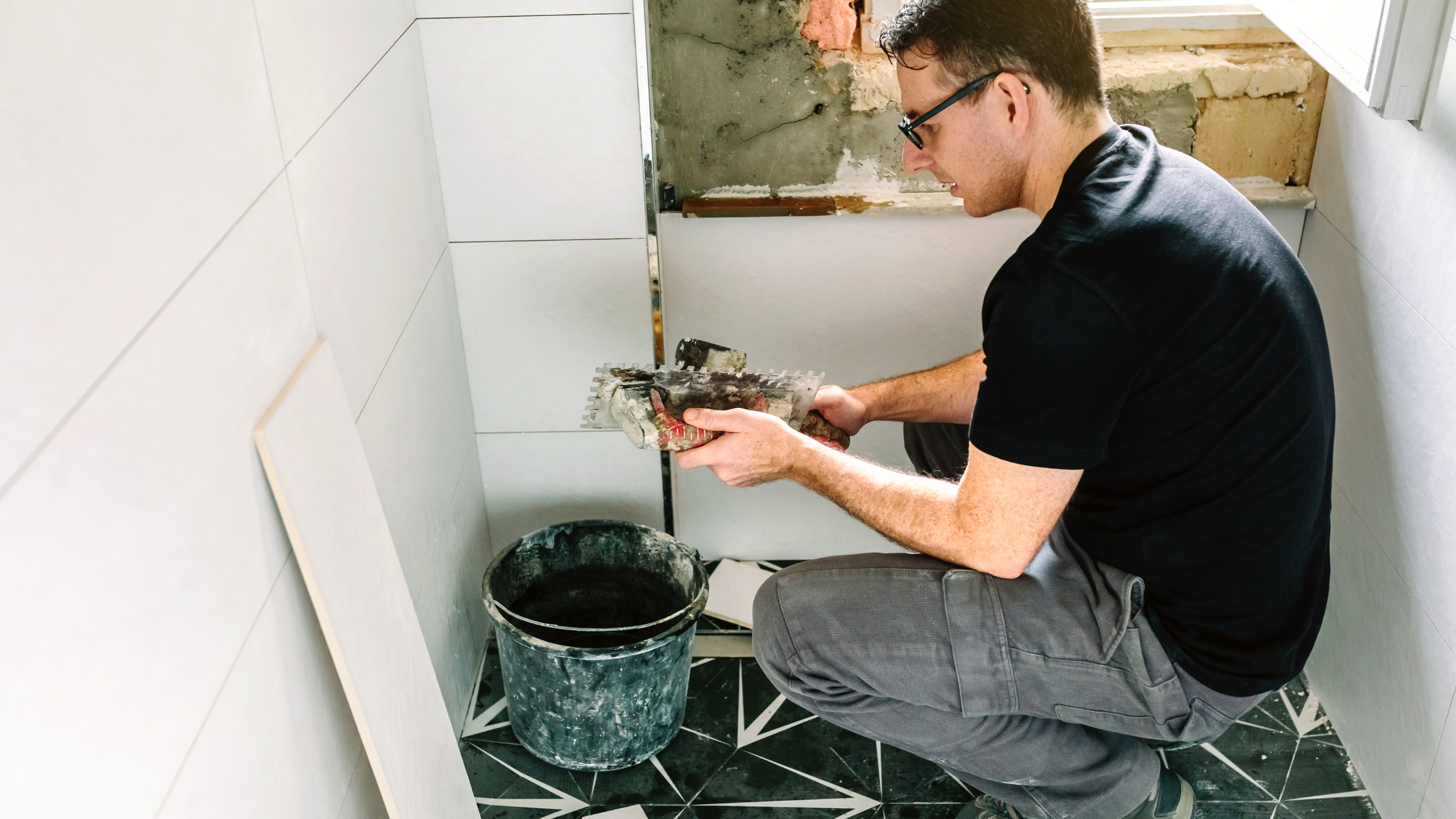Bathtubs are typically made of porcelain or other material, but they can become scratched and discolored over time. You may not even notice it happening, but eventually, you’ll start to see that your bathtub is no longer the pure white color it used to be. It’s important to know when it’s time for a refinish, so you don’t end up with permanent damage on your tub!
Here are ten signs that indicate its time for a new finish:
Uneven Bathtub Coloration
Over time, exposure to water can cause discoloration in the form of brown, yellow, or pink splotches along the tub’s once-crisp surface. While some surface stains can be removed with regular cleaning, they will eventually embed in the porcelain coating and necessitate refinishing.
Discoloration can also signify more serious issues, such as mold and drain blockages, which cause water to sit in the tub for longer after use. Refinishing your bathtub after any work to improve or restore its functionality will be able to remove unsightly splotches. You’ll be able to clean your tub regularly and enjoy a gleaming bathroom once more!
Chipped Enamel Finish
Bathtubs that are frequently used are prone to chipping. Something has often fallen onto the bathtub’s surface, such as a showerhead, tool, or even your children playing with toys in the tubs (trust us, we’ve seen it all).
These chips are unsightly and untidy, detracting from the beauty of your bathroom. The fragments also indicate that the bathtub’s moisture barrier has failed, potentially resulting in rust or other water damage to the iron, steel, or other material that your bathtub is made of.
A chipped tub also feels uneasy under your feet, reducing the pleasure you get from your shower or bath.
Scratched & Abrased Tub Surface
Like chips, scuffs and scrapes are evidence that your bathtub’s finish has worn down over time. They’re unsightly, leaving your bathroom looking less than fresh. Even worse, scratches can lead to mold growth behind the surface, which is difficult to remove without completely refinishing the tub. Scratches and scrapes may also indicate rust beneath the surface, which can be dangerous if left unaddressed.
Damaged Tub for Unknown Reasons
It’s possible that the damage to your bathtub occurred spontaneously or wasn’t caused by you or your family members. However, if you’re unsure how the damage came about, it’s time to refinish.
Perhaps there was a plumbing leak, and moisture damaged the material underneath the surface, or maybe one of your children dropped something on the tub and did not tell anyone (we’ve seen that too). No matter what caused it to happen, refinishing will make sure any problems with porcelain coating are no longer at risk for further issues!
Dull Bathtub Finish
Your bathtub’s porcelain finish will usually shine, particularly after a thorough cleaning. However, as the tub ages, the protective coating on the glaze begins to wear away, making the tub appear dull and dirty. Because nothing can keep water from penetrating the tub’s material as it ages, you may be more prone to mold issues. You can have the protective coating reapplied by scheduling an appointment for reglazing, preventing significant problems from affecting the fixture and possibly the rest of your home.
Stubborn Water Stains
When you notice a water ring or stain on your bathtub, it could mean that this finish has worn away and is no longer protecting the underlying material from moisture damage. Eventually, rust and other issues will develop if moisture remains in contact with the metal beneath.
So what do you do when you see these unsightly marks? You can remove them with household products such as vinegar or baking soda mixed into a paste; however, they may not be strong enough to get through the coating. Be aware that some chemicals are used in cleaners that shouldn’t be put onto natural stone surfaces like marble and limestone: cleaning products for granite include instructions stating how often they should or shouldn’t be used. Always read the instructions before cleaning any surface in your bathroom!
Outdated Showerhead & Faucet
Replacing old faucets and showerheads in your bathroom is one of the best ways to make it look new.
However, when you take off your bathtub’s current plumbing, you’ll see that the original finish didn’t match the rest of the tub; instead, it may have a darker shade or a different design altogether. This can be distracting and annoying if you’ve always loved everything about your bathroom except for this mismatched set of fixtures!
Very Old Bathtub Liner
If you haven’t replaced your bathtub liner yet, now is the time! Replacing an old liner with a new one will not only remove any previous discoloration but also make it look brand new without actually having to install a new tub.
Bubbling/Peeling Tub Paint
The last sign that your tub needs refinishing is when the paint starts to peel or bubble and then finally oxidizes and turns colors such as lighter shades of blue, rust red, black, or other unattractive hues.
If you see this type of discoloration on your bathtub’s surface after several years of use without refinishing it, it could be a sign that moisture has corroded the metal beneath. First, however, be sure to scrape off any flaking paint so as not to inhale toxic fumes from whatever chemicals may have been exposed before refinishing your bathroom!
Cracks on Tub Surface
After several years of use, cracks can appear on the surface of your bathtub. Damages like these are usually due to one of two things: either stress fractures or improper protection against rusting pipes.
If you see a crack in the tub itself, there may be some sort of moisture problem beneath the surface. This could result from water damage from corrosion on your metal pipes which can eventually eat through your finish’s protective coating and cause this type of mark on your bathtub.
While it’s possible to remove scratches from your tub, they will eventually return as water penetrates the surface over time. Once this happens, you’ll need refinishing services for a permanent fix, or else you’ll be stuck with unsightly blemishes on your otherwise clean bathtub!
Malfunctioning Bathtub Drain
If you find that water won’t drain out of your tub following a shower or other activity, then it may be due to a malfunctioning drain assembly. If there are visible cracks in the seal surrounding the drain opening, your best bet would be to have them repaired before attempting to use any chemicals or tools to remove the clog yourself. However, if the problem is that your bathtub drain stopper won’t open or close as it should, then this can easily be fixed by having a new assembly installed.
Faded Coloration & Small Chipped Paints
Another sign that you need to refinish your bathtub is when the color has faded over time, usually due to ultraviolet light exposure over a prolonged period. You can also see this type of damage through small chips, which are also caused by rusting pipes or improper protection against them.
When you do have your bathtub reglazed, the protective coating will keep its new look for several years rather than just a few months! Not only will it prevent these signs from ever showing up again on your tub’s surface, but it will also increase the overall value of your home while protecting not just your bathroom fixtures but also the whole house from water damage.
Extreme Mold Growth
If you notice mold growing on your bathtub, this is a clear sign that there are water leaks causing damage behind the tub’s surface. Look for signs of decay in other parts of your bathroom to see if there are any moisture problems elsewhere.
Black Streaks/Marks on Bathtub Surface
You’ve probably seen black streaks or marks often referred to as “hard water stains” on bathroom fixtures before since they’re so common. However, hard water stains can also show up on your bathtub over time due to calcium deposits when the finish begins to wear away without being treated with refinishing services. Although these types of marks are typically harmless, they can be annoying to look at and reduce your property’s value.
Strong Mildew Odor Indicating Moisture
Mold and mildew can grow in places where there is moisture, or they can affect surfaces that have been stained with water. These types of bacteria like to live on walls, floors, and tubs (or even showers) if they aren’t adequately taken care of.
That’s why it’s essential to scrape off any loose paint before refinishing your bathtub or shower area since most painters won’t remove old paint for you. If you do see signs of mold growing on the tub itself after removing the stain, be sure to clean it thoroughly with a bathroom cleaner or hydrogen peroxide before finishing your bathroom so as not to breathe in toxic fumes!
Conclusion
So far, we have learned how important it is to refinish our bathtubs and showers, which brought us to the point where we talked about the different mistakes people make when getting their bathroom refinished and what signs you should look for.
Suppose you can check off some of these signs and symptoms in your bathroom. In that case, it’s time to get in touch with a professional refinishing service that will thoroughly restore your bathtub or shower to its original beauty while also protecting your home from future damage

